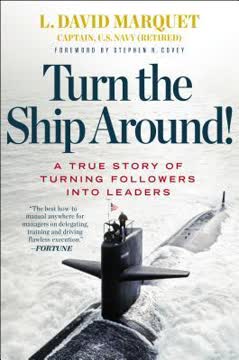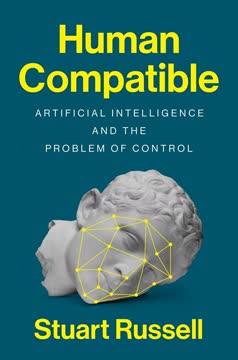نکات کلیدی
1. اتحاد: چارچوبی نوین برای روابط کارفرما و کارمند
اتحاد راهی را برای شرکتها و کارمندانشان ترسیم میکند.
اعتماد از طریق صداقت. چارچوب اتحاد رابطه کارفرما و کارمند را برای عصر مدرن بازتعریف میکند. این چارچوب به این واقعیت اذعان دارد که استخدام مادامالعمر دیگر ممکن نیست، اما نیاز به اعتماد و سرمایهگذاری متقابل را شناسایی میکند.
مزیت متقابل. در چارچوب اتحاد، هر دو طرف متعهد به افزودن ارزش به یکدیگر هستند. شرکت در ارزش بازار بلندمدت کارمند سرمایهگذاری میکند، در حالی که کارمند به سازگاری و موفقیت شرکت کمک میکند. این وضعیت سناریویی برد-برد ایجاد میکند که در آن هر دو طرف میتوانند شکوفا شوند.
تیم، نه خانواده. اتحاد شرکت را به عنوان یک تیم بازتعریف میکند نه یک خانواده. این امر اجازه میدهد تا رابطهای واقعگرایانهتر و پربارتر شکل بگیرد، جایی که اعضا به سمت اهداف مشخصی کار میکنند در حالی که آرزوهای فردی خود را حفظ میکنند.
2. مأموریتهای کاری: سازماندهی کار حول مأموریتهای محدود
مأموریت کاری نمایانگر تعهد اخلاقی کارفرما و کارمند به یک مأموریت خاص است.
سه نوع مأموریت:
- چرخشی: نقشهای استاندارد و با مدت معین برای موقعیتهای ورودی یا قابل تعویض
- تحولآفرین: مأموریتهای شخصیسازی شده و مبتنی بر مأموریت برای رشد متقابل
- بنیادی: تعهدات بلندمدت برای کارمندان کلیدی که برای آینده شرکت حیاتی هستند
مأموریتها و زمانبندیهای تعریفشده. مأموریتهای کاری اهداف و زمانبندیهای روشنی را ارائه میدهند که معمولاً بین ۲ تا ۵ سال به طول میانجامند. این وضوح به هر دو طرف اجازه میدهد تا در رابطه سرمایهگذاری کنند در حالی که انعطافپذیری را حفظ میکنند.
توسعه شغلی. مأموریتهای کاری به منظور ارتقاء مهارتها و قابلیتهای بازار کار کارمندان طراحی شدهاند، حتی اگر آنها در نهایت شرکت را ترک کنند. این رویکرد استعدادهای برتر را جذب کرده و عملکرد بالا را در طول مأموریت تشویق میکند.
3. ایجاد همراستایی: همراستایی اهداف کارمند و شرکت
همراستایی به این معناست که مدیران باید بهطور صریح به دنبال یافتن و برجستهسازی مشترکات بین هدف و ارزشهای شرکت و هدف و ارزشهای شغلی کارمند باشند.
اهداف مشترک. چارچوب اتحاد بر یافتن زمین مشترک بین مأموریت شرکت و آرزوهای شغلی کارمند تأکید میکند. این همراستایی رابطهای قویتر و پربارتر ایجاد میکند.
ارتباط باز. مدیران باید با کارمندان درباره اهداف، ارزشها و مسیرهای شغلی مورد نظرشان گفتوگوهای صادقانهای داشته باشند. این شفافیت اعتماد را ایجاد کرده و به تعریف مأموریتهای کاری متقابل کمک میکند.
انعطافپذیری در همراستایی. همراستایی کامل ضروری نیست؛ هدف یافتن همپوشانی کافی برای مدت زمان یک مأموریت خاص است. این امر اجازه میدهد تا آرزوها و نیازهای شرکت در طول زمان تغییر کند.
4. اجرای مأموریتهای تحولآفرین: مراحل برای اجرای موفق
مأموریتی که شما با کارمند خود تعریف میکنید باید هدفی واضح، دقیق و ملموس داشته باشد.
چهار مرحله کلیدی:
- تعریف مأموریت و نتایج مورد انتظار برای هر دو طرف
- برقراری نقاط بازرسی منظم برای بازخورد و ارزیابی پیشرفت
- شروع به بحث درباره مأموریت بعدی قبل از پایان مأموریت فعلی
- مدیریت تغییرات غیرمنتظره بهطور مشترک
مسئولیت متقابل. هم کارفرما و هم کارمند مسئول موفقیت مأموریت هستند. بازرسیهای منظم همراستایی را تضمین کرده و در صورت نیاز امکان اصلاح مسیر را فراهم میکند.
برنامهریزی انتقال. چه کارمند به مأموریت جدیدی درون شرکت منتقل شود و چه برای فرصتهای خارجی خارج شود، برنامهریزی مناسب برای جانشینی و انتقال برای حفظ اتحاد بسیار حیاتی است.
5. هوش شبکهای: بهرهبرداری از شبکههای کارمندان برای منافع شرکت
هر کارمند را به عنوان یک پیشگام فردی تصور کنید که دادههایی از دنیای بیرون جمعآوری میکند—از مقالات، کتابها و کلاسها، اما مهمتر از همه، از دوستان دیگر درون و بیرون صنعت.
هوش ارزشمند. شبکههای کارمندان دسترسی به روندهای صنعتی، اطلاعات رقابتی و فرصتهای بالقوهای را فراهم میکنند که ممکن است بهطور عمومی در دسترس نباشند.
استراتژیهای اجرایی:
- استخدام افراد با ارتباطات قوی
- آموزش کارمندان برای جمعآوری و به اشتراکگذاری هوش بهطور اخلاقی
- ارائه منابع برای ساخت شبکه (مانند بودجههای شبکهسازی، فرصتهای سخنرانی)
- ایجاد سیستمهایی برای به اشتراکگذاری اطلاعات جمعآوریشده درون شرکت
مزیت متقابل. تشویق به هوش شبکهای به کارمندان کمک میکند تا شبکههای حرفهای خود را گسترش دهند در حالی که بینشهای ارزشمندی را به شرکت ارائه میدهند.
6. شبکههای فارغالتحصیلی شرکتی: حفظ روابط مادامالعمر
استخدام مادامالعمر ممکن است به پایان رسیده باشد، اما رابطه مادامالعمر همچنان ایدهآل است.
مزایای شبکههای فارغالتحصیلی:
- استخدام: منبعی برای کارمندان بازگشتی و ارجاعات
- هوش: بینشهایی درباره روندهای صنعتی و درک شرکت
- توسعه کسبوکار: ارجاعات مشتری و نمایندگی برند
سطوح سرمایهگذاری:
- نادیده گرفتن: از دست دادن مزایای بالقوه
- حمایت: کمک غیررسمی به گروههای تحت رهبری فارغالتحصیلان
- سرمایهگذاری: زیرساخت رسمی و مزایای سیستماتیک
رابطه متقابل. شبکههای فارغالتحصیلی موفق ارزش واقعی را به کارمندان سابق ارائه میدهند در ازای ادامه تعامل و حمایت آنها.
7. سازگاری با عصر شبکهای: تفکر بلندمدت در دنیای در حال تغییر
کسبوکاری که وفاداری ندارد، کسبوکاری است که تفکر بلندمدت ندارد. کسبوکاری که تفکر بلندمدت ندارد، کسبوکاری است که نمیتواند در آینده سرمایهگذاری کند.
تعادل بین انعطافپذیری و تعهد. چارچوب اتحاد شرکتها را تشویق میکند تا در موفقیت بلندمدت کارمندان خود سرمایهگذاری کنند در حالی که سازگاری لازم در محیط کسبوکار سریعالتحول امروز را حفظ میکنند.
تغییر فرهنگی. پذیرش ذهنیت اتحاد نیاز به تغییر در نحوه دیدگاه شرکتها و کارمندان نسبت به رابطهشان دارد. این امر بر مزیت متقابل، اعتماد و سرمایهگذاری مداوم در موفقیت یکدیگر تأکید میکند.
تأثیر اجتماعی. با بهبود روابط کاری و تشویق به تفکر بلندمدت، چارچوب اتحاد پتانسیل ایجاد تغییرات مثبت فراتر از شرکتهای فردی را دارد و به نفع اقتصاد و جامعه گستردهتر است.
آخرین بهروزرسانی::
FAQ
What's "The Alliance: Managing Talent in the Networked Age" about?
- Overview: "The Alliance" by Reid Hoffman, Ben Casnocha, and Chris Yeh explores a new framework for employer-employee relationships in the modern, networked age.
- Core Concept: The book introduces the idea of treating employment as an alliance, where both parties make mutual promises and investments.
- Purpose: It aims to replace the outdated models of lifetime employment and free agency with a more adaptable and honest approach.
- Focus: The book emphasizes building trust, mutual investment, and long-term relationships even after employment ends.
Why should I read "The Alliance: Managing Talent in the Networked Age"?
- Modern Relevance: It addresses the challenges of managing talent in today's rapidly changing business environment.
- Practical Framework: Offers actionable strategies for building stronger, more honest relationships between employers and employees.
- Insightful Examples: Provides real-world examples from companies like LinkedIn and PayPal to illustrate its concepts.
- Career Development: Helps both managers and employees understand how to align their goals for mutual benefit.
What are the key takeaways of "The Alliance: Managing Talent in the Networked Age"?
- Alliance Framework: Employment should be viewed as a mutually beneficial alliance rather than a transactional relationship.
- Tours of Duty: Introduces the concept of "tours of duty" to structure employment relationships with clear, finite missions.
- Network Intelligence: Encourages leveraging employee networks for competitive advantage and innovation.
- Corporate Alumni Networks: Highlights the importance of maintaining relationships with former employees for ongoing mutual benefit.
How does "The Alliance" redefine the employer-employee relationship?
- Mutual Investment: Both parties invest in each other's success, with the company enhancing the employee's market value and the employee contributing to the company's growth.
- Honest Conversations: Encourages open discussions about career goals and company needs to build trust and alignment.
- Adaptability: Emphasizes the need for flexibility in roles and responsibilities to adapt to changing business landscapes.
- Long-term Relationships: Advocates for maintaining connections with employees even after they leave the company.
What is the "Tours of Duty" concept in "The Alliance"?
- Defined Missions: A "tour of duty" is a specific, finite mission that an employee undertakes within a company.
- Mutual Benefits: It aligns the employee's career goals with the company's objectives, providing clear benefits for both.
- Types of Tours: The book describes different types of tours, including Rotational, Transformational, and Foundational, each with varying levels of commitment and alignment.
- Flexibility: Tours of duty allow for adaptability and growth, enabling employees to take on new challenges and roles.
How does "The Alliance" suggest implementing network intelligence?
- Leverage Employee Networks: Encourages employees to use their personal and professional networks to gather valuable information and insights.
- Encourage External Engagement: Supports activities like attending conferences and networking events to expand knowledge and connections.
- Structured Sharing: Establishes processes for employees to share what they learn with the company, enhancing collective intelligence.
- Cultural Shift: Promotes a culture where networking is seen as a valuable asset rather than a distraction.
What role do corporate alumni networks play in "The Alliance"?
- Lifelong Relationships: Alumni networks maintain connections with former employees, extending the alliance beyond active employment.
- Mutual Benefits: Alumni can provide referrals, insights, and even return to the company, benefiting both parties.
- Investment Levels: The book outlines different levels of investment in alumni networks, from basic support to comprehensive engagement.
- Brand Ambassadors: Alumni can enhance the company's brand and reputation through their ongoing success and advocacy.
How does "The Alliance" address the challenges of modern employment?
- Trust and Loyalty: Aims to rebuild trust and loyalty in an era where traditional employment models have broken down.
- Adaptability: Provides a framework for companies to remain adaptable and innovative in a fast-paced environment.
- Employee Engagement: Focuses on engaging employees by aligning their personal goals with the company's mission.
- Long-term Thinking: Encourages companies to invest in their employees' futures, fostering a culture of long-term growth and success.
What are some practical strategies from "The Alliance" for managers?
- Define Clear Missions: Use tours of duty to set clear, achievable goals for employees that align with company objectives.
- Foster Open Communication: Encourage honest conversations about career aspirations and company needs to build trust.
- Support Networking: Provide resources and opportunities for employees to expand their networks and bring back valuable insights.
- Maintain Alumni Connections: Develop and invest in corporate alumni networks to leverage former employees' expertise and influence.
What are the best quotes from "The Alliance" and what do they mean?
- "Help make our company more valuable, and we’ll make you more valuable." This quote encapsulates the mutual investment philosophy of the alliance framework.
- "We’re a team, not a family." Emphasizes the importance of treating employment as a professional relationship with clear goals and expectations.
- "A business without loyalty is a business without long-term thinking." Highlights the need for trust and loyalty to drive sustainable success.
- "The alliance makes employees more valuable by making them more adaptive and skillful." Underlines the focus on employee development and adaptability.
How can "The Alliance" help employees advance their careers?
- Career Transformation: Tours of duty provide structured opportunities for employees to gain new skills and experiences.
- Networking Opportunities: Encourages building and leveraging professional networks for career growth and development.
- Alignment with Goals: Helps employees align their personal aspirations with their roles, leading to more fulfilling work.
- Ongoing Relationships: Maintains connections with former employers through alumni networks, offering continued support and opportunities.
How does "The Alliance" apply to different industries and roles?
- Universal Principles: The alliance framework is adaptable to various industries and roles, focusing on mutual benefit and adaptability.
- Customizable Tours: Tours of duty can be tailored to fit the specific needs and goals of different sectors and job functions.
- Scalable Strategies: The book provides scalable strategies for companies of all sizes, from start-ups to large corporations.
- Industry Examples: Offers examples from diverse industries, including tech, consulting, and manufacturing, to illustrate its concepts.
نقد و بررسی
کتاب همپیمانی نظرات متفاوتی را به خود جلب کرده است. برخی از منتقدان به خاطر دیدگاه تازهاش در مورد روابط شغلی مدرن و استراتژیهای عملی برای مدیران از آن تمجید کردهاند. خوانندگان به مفهوم "تورهای وظیفه" و تأکید بر منافع متقابل بین کارفرمایان و کارمندان توجه ویژهای دارند. در عین حال، برخی به تمرکز کتاب بر مثالهای لینکدین و سیلیکونولی انتقاد کرده و آن را تکراری میدانند. بهطور کلی، منتقدان این کتاب را یک مطالعه سریع و پرمحتوا میدانند که ایدههای ارزشمندی برای سازگاری با تغییرات ماهیت کار در قرن بیست و یکم ارائه میدهد.
Similar Books



















